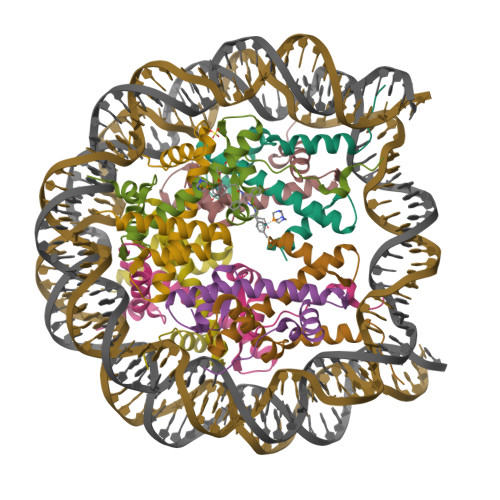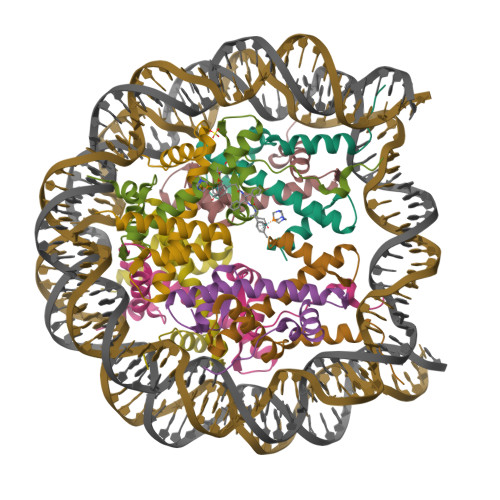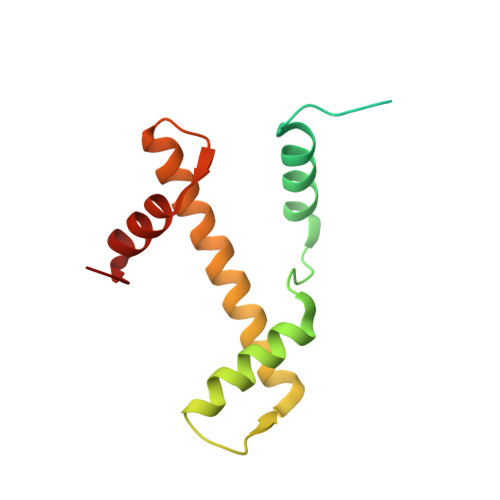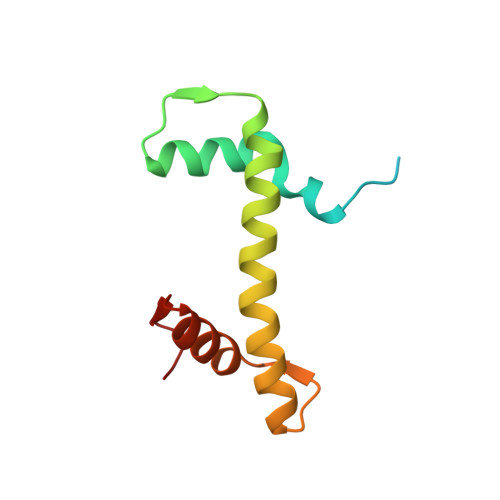Nucleosome acidic patch-targeting binuclear ruthenium compounds induce aberrant chromatin condensation
Davey, G.E., Adhireksan, Z., Ma, Z., Riedel, T., Sharma, D., Padavattan, S., Rhodes, D., Ludwig, A., Sandin, S., Murray, B.S., Dyson, P.J., Davey, C.A.(2017) Nat Commun 8: 1575-1575
- PubMed: 29146919
- DOI: https://doi.org/10.1038/s41467-017-01680-4
- Primary Citation of Related Structures:
5XF3, 5XF4, 5XF5, 5XF6 - PubMed Abstract:
The 'acidic patch' is a highly electronegative cleft on the histone H2A-H2B dimer in the nucleosome. It is a fundamental motif for protein binding and chromatin dynamics, but the cellular impact of targeting this potentially therapeutic site with exogenous molecules remains unclear. Here, we characterize a family of binuclear ruthenium compounds that selectively target the nucleosome acidic patch, generating intra-nucleosomal H2A-H2B cross-links as well as inter-nucleosomal cross-links. In contrast to cisplatin or the progenitor RAPTA-C anticancer drugs, the binuclear agents neither arrest specific cell cycle phases nor elicit DNA damage response, but rather induce an irreversible, anomalous state of condensed chromatin that ultimately results in apoptosis. In vitro, the compounds induce misfolding of chromatin fibre and block the binding of the regulator of chromatin condensation 1 (RCC1) acidic patch-binding protein. This family of chromatin-modifying molecules has potential for applications in drug development and as tools for chromatin research.
Organizational Affiliation:
School of Biological Sciences, Nanyang Technological University, 60 Nanyang Drive, Singapore, 637551, Singapore.



























